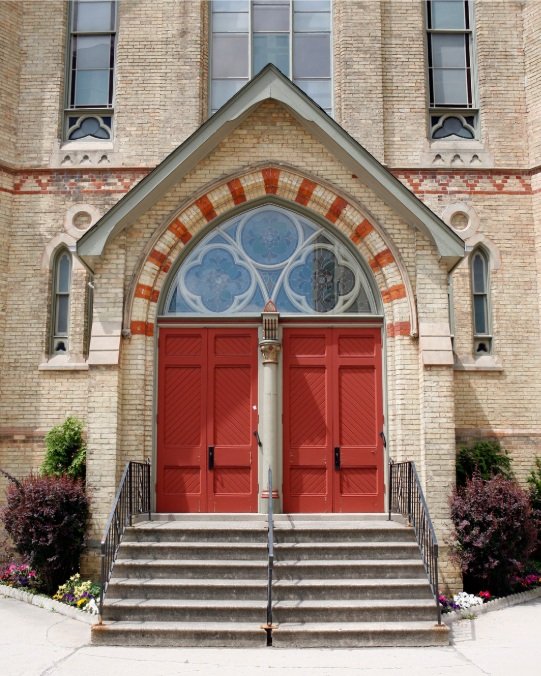What happens when church buildings close?
Trends and status of Christian institutional property ownership in the City of Boston
by Rudy Mitchell, Senior Researcher
Boston is home to about 575 Christian churches. While many of these rent space from other churches, organizations, or private owners, a significant number of congregations own and meet in traditional church buildings, former commercial properties, or converted residential buildings.
Currently, churches and their denominations own about 320 properties in Boston, including 256 buildings primarily used for worship, ministry, and service.
In recent decades, some church-owned buildings have been sold to other congregations, developers, and private business owners. As a result, about 45 buildings formerly owned by churches or religious organizations have been lost to the Christian community as well as the communities and neighborhoods these churches once served and called home.
These churches not only contributed to the spiritual well-being of their neighborhoods but also played an important role in sustaining the social fabric of their communities. Many provided a variety of social services and enriched civic life. Memories of important life events were tied to these sacred spaces.
As a result, the loss of these congregations and sacred spaces has had a deeper impact than is often realized.
In a constantly changing city and culture, there are many reasons why congregations decline, and church buildings are sold. To stay vital to the life of the community, churches require spiritual renewal and the ability to adapt to younger generations. Shifting demographics also can affect congregations, particularly when their members move to different areas farther from the church building.
In the Boston area, this movement of people is influenced by ever-rising housing costs and, in some neighborhoods, gentrification: the process of higher-earning and more educated residents moving into historically marginalized neighborhoods. While gentrification brings increased financial investment and renovation to a neighborhood, it often also leads to a rise in housing costs, which results in the displacement of long-time residents. This dynamic disrupts congregations, as church members may be displaced or move elsewhere. Churches faced with aging buildings, lack of parking, and aging, dispersed membership may find selling their buildings necessary—or even advantageous. Sometimes, congregations that were renting space are no longer able to afford the cost.
What happened to these buildings?
Congregations, which own and meet in residential houses, often adapted the first-floor space for worship. In several cases, when sold, the new owner has changed the occupancy, converting the space into a residence and adding an additional unit.
Iglesia de Dios Pentecostal at 68 Day St. in Jamaica Plain used the first floor for church services, but after the building was sold, the first floor was changed into a residential unit.
The Greater Community Baptist Church at 27 Howland St. in Roxbury used to meet in a converted house with a brick addition on the front. When this property was sold, the new owner removed the addition and converted the building to a two-family house.
Iglesia de Dios de la Profecia owned a tax-exempt converted house at 20 Moreland St. in Roxbury, which was sold and converted into a private two-family residence.
On Melville Avenue in Dorchester, the Salvation Army used a large house and 35,000-square-foot lot as a ministry center and church called Jubilee Christian Fellowship. When sold in 2022, the property was turned into a two-family luxury residential building.
While several houses used as church buildings have been sold, congregations such as the Church of God and Saints of Christ on Crawford Street and Spirit and Life Bible Church on Columbia Road continue to meet in converted houses.
In the past, numerous churches met in commercial or storefront properties, even in neighborhoods like the city's South End. Some storefront churches rented space, while others purchased the buildings when prices were relatively low. As rental prices rose and neighborhoods gentrified, several churches renting storefronts had to move out or close.
One rental storefront church space became a dental office, and another became a restaurant. Several church spaces have become laundromats. For example, the Full Life Gospel Center in Codman Square decided to sell its storefront property and buy another Dorchester church building whose Haitian congregation had moved to a former synagogue in Randolph. The former Full Life Gospel Center property on Washington Street was then renovated into a laundromat.
“Over the last 50 years in Boston, as the city has changed and property has become much more expensive, many former storefront churches have disappeared.”
Although churches, which own commercial-type space, generally have not needed to move, some have chosen to sell and relocate or buy other buildings. Grace Church of All Nations in Dorchester chose to sell its storefront property to a CVS Pharmacy and purchased a former Christian Science Church in Roxbury. Over the last 50 years in Boston, as the city has changed and property has become increasingly expensive, many former storefront churches have disappeared.
From the 1950s to 1970s, as neighborhood churches in Boston declined and congregations were leaving the city, many church buildings and synagogues were sold or passed on to new Black, Haitian, or Hispanic congregations. In recent years, some church buildings have been sold to other congregations, while many others have been lost to the religious community altogether.
Some churches with valuable properties may have concluded their assets could be better spent on more extensive, less expensive, and more modern facilities in other areas, closer to where their congregants live. Those congregants who used to live in Lower Roxbury, Roxbury, or Dorchester may now live outside the city because of escalating housing costs in Boston. Although some churches that have sold city buildings have rented temporarily, most have purchased other buildings.
The 45 church buildings cited earlier represent over 30 congregations that have closed permanently. Others have either moved elsewhere in the city—such as Grace Church of All Nations, New Hope Baptist Church, Full Life Gospel Center, Mount Calvary Baptist Church, Church of God of Prophecy, Boston Chinese Evangelical Church—or moved out of the city—such as Trinity Latvian, Christ the Rock Metro, Concord Baptist Church, and Ebenezer Baptist. Some congregations, such as Holy Mount Zion Church, New Fellowship Baptist/Spirit and Truth, and Mount Calvary Holy Church, are left in limbo due to fires, structural deterioration, or financial constraints.
Although some churches have relocated outside the city of Boston, the overall number is still relatively small compared to the total number of churches currently in the city. As lower- and middle-income Boston residents, as well as new immigrants, settle in communities farther from downtown, new churches are also starting up in these communities. At the same time, inner-city churches are losing members who no longer commute back to their former congregations.
When traditional church properties are sold to non-church buyers, they are mostly converted into market-rate residential units, such as condos or apartments. However, there are notable exceptions to this: St. James African Orthodox Church in Roxbury, Hill Memorial Baptist Church in Allston-Brighton, and Boston Chinese Evangelical Church in Chinatown.
St. James African Orthodox was rescued from demolition and private development through neighborhood activism and the help of Historic Boston, Inc., which purchased the building, made repairs, and eventually resold it to a community organization, the Roxbury Action Program. (In the process, Historic Boston, Inc. tried to interest other churches and community organizations in developing the building cooperatively; however, no churches could take on the project.)
Hill Memorial Baptist worked with a neighborhood development organization and the City of Boston to see their church sale result in plans for affordable senior housing, with the church building preserved to serve as a social center for the new residents. The church, its denomination, and the Allston Brighton Community Development Corporation went through a five-year partnership and planning process to achieve positive outcomes for the community and church.
Boston Chinese Evangelical is another unique example of a traditional church-building sale. Over the years, church leaders were in dialogue with the City of Boston and the Boston Public Schools about their church building and property in Chinatown, which was in a strategic location next to the Quincy Elementary School. After the congregation purchased a large, nearby building at 120 Shawmut Ave., it sold its church building to the city. The church building was demolished, and the new Josiah Quincy Upper School was built on the site.
While the St. James African Orthodox and Hill Memorial Baptist congregations closed, the Boston Chinese Evangelical congregation continues to use a diverse portfolio of property that includes rented worship space at the Josiah Quincy Elementary School, its multi-purpose building at 120 Shawmut Ave., and a Newton, Massachusetts, satellite church building.
Preserving and sustaining church congregations and their properties is critical for the health of Boston’s neighborhoods. Churches’ physical and spiritual presence contributes to their communities on many levels.
Congregations that want to stay in their current neighborhoods can seek ways to serve others and sustain themselves by renting space to community groups or other congregations. Churches looking to close or relocate and sell can plan and consider positive outcomes for their building by selling to another church or community-serving organization. They can also work to see community development efforts, such as community centers or affordable housing units, built within the church or on its site.






